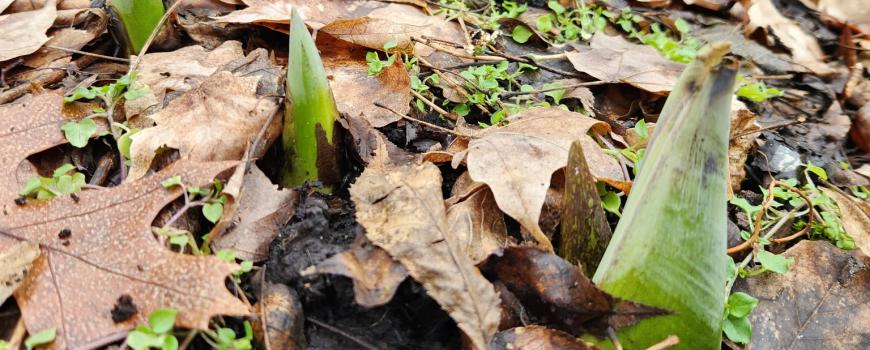Our earliest-blooming wildflower, skunk cabbage (Symplocarpus foetidus) has sprung up in the woodland fen. This photo was taken by our land manger on February 6. On that date our area was at 10 growing degree days, which is a measure of heat accumulation that allows us to predict many springtime nature events. (For more on growing degree days and to track your zip code, click here.) Skunk cabbage flowers seem to be most common around the third week of February, but can vary from year to year. The more time we spend above 50 degrees Fahrenheit, the earlier we can expect to see flowers.
Skunk cabbage is an obligate plant, meaning it only grows in wetlands. In fact, it is one of the plants ecologists use to delineate wetlands. It has a high metabolism which can melt surrounding ice and snow. It's mostly pollinated by flies, and both the common and Latin names point to one of it's many charms - it's stinky! It's also much-anticipated because it's one of the earliest signs that spring is on the way.




